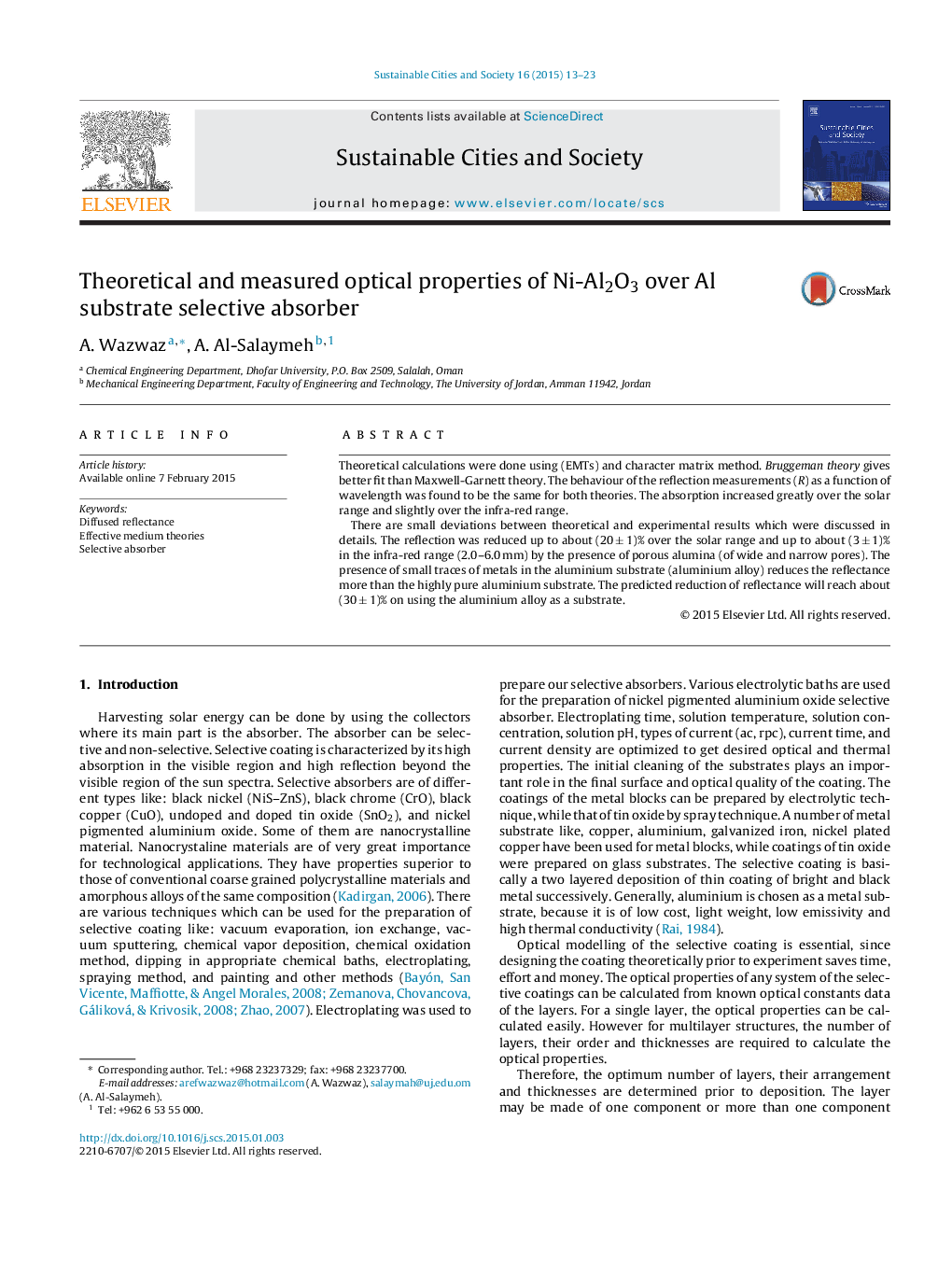| Article ID | Journal | Published Year | Pages | File Type |
|---|---|---|---|---|
| 308102 | Sustainable Cities and Society | 2015 | 11 Pages |
•Theoretical R as a function of wavelength is the same for MG & BR theories.•MG results are closer than BR to measured ones.•There are small deviations between theoretical and experimental results.•The presence of impurities in Al substrate reduces R in all selective absorbers.
Theoretical calculations were done using (EMTs) and character matrix method. Bruggeman theory gives better fit than Maxwell-Garnett theory. The behaviour of the reflection measurements (R) as a function of wavelength was found to be the same for both theories. The absorption increased greatly over the solar range and slightly over the infra-red range.There are small deviations between theoretical and experimental results which were discussed in details. The reflection was reduced up to about (20 ± 1)% over the solar range and up to about (3 ± 1)% in the infra-red range (2.0–6.0 mm) by the presence of porous alumina (of wide and narrow pores). The presence of small traces of metals in the aluminium substrate (aluminium alloy) reduces the reflectance more than the highly pure aluminium substrate. The predicted reduction of reflectance will reach about (30 ± 1)% on using the aluminium alloy as a substrate.
